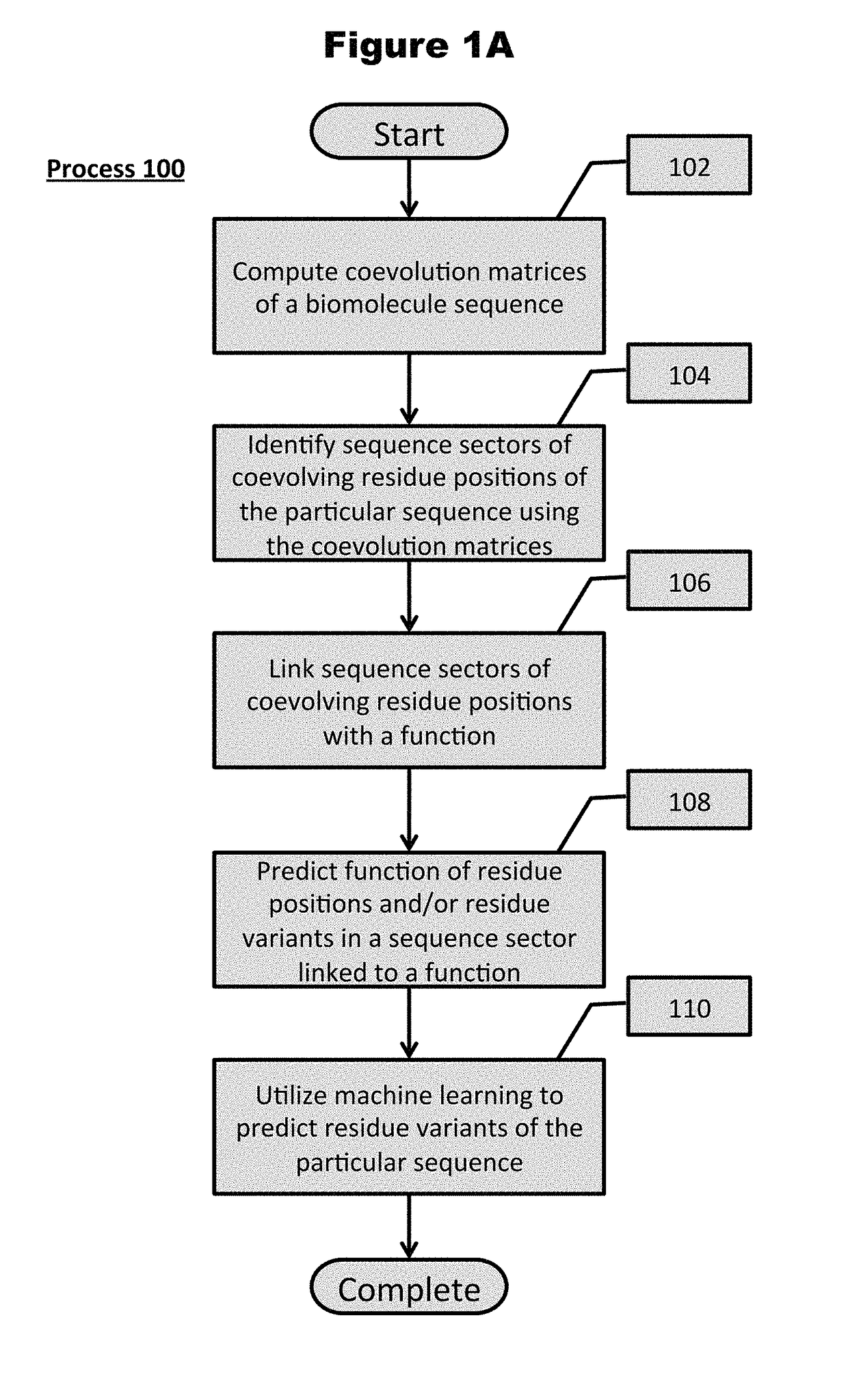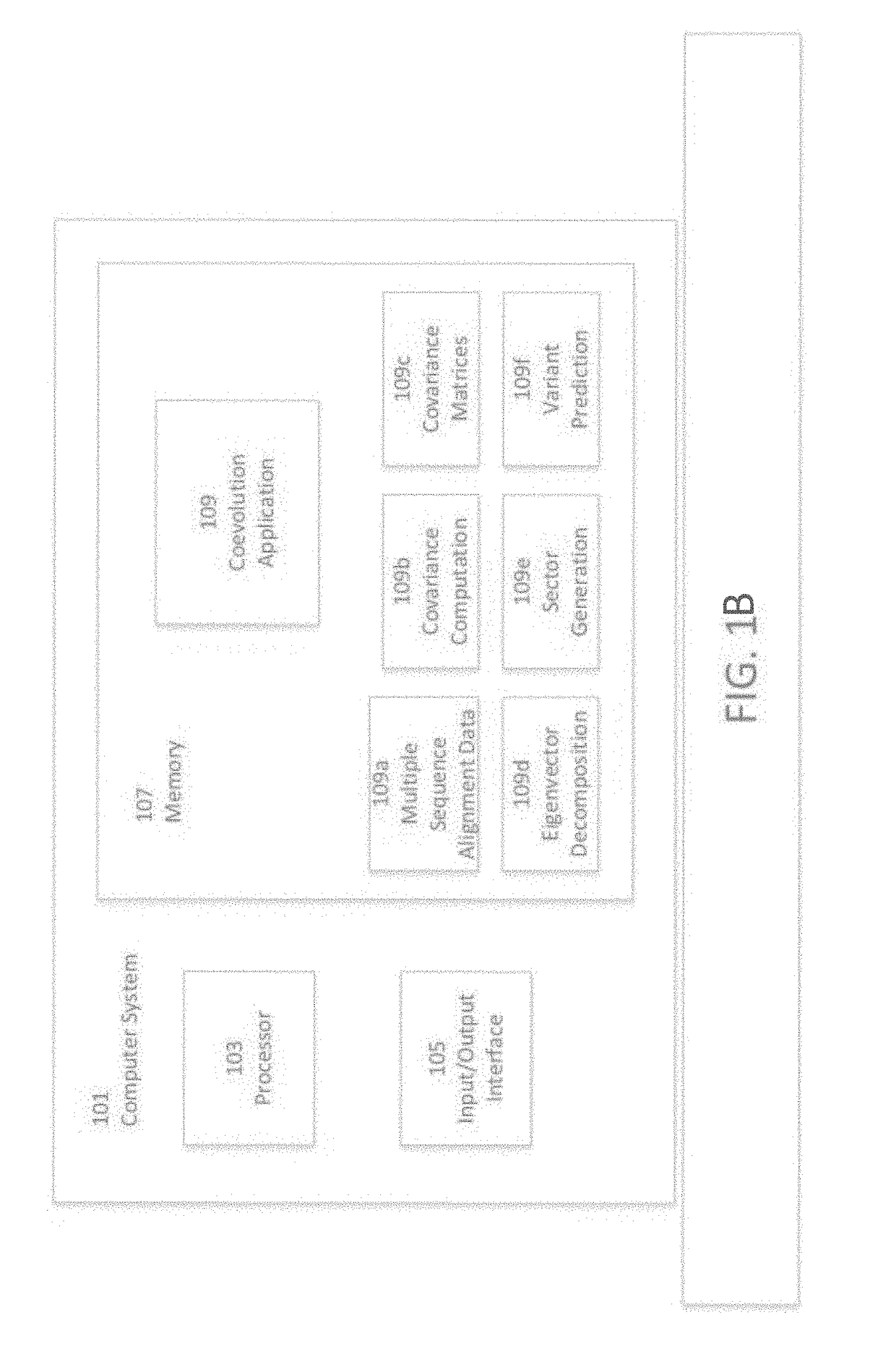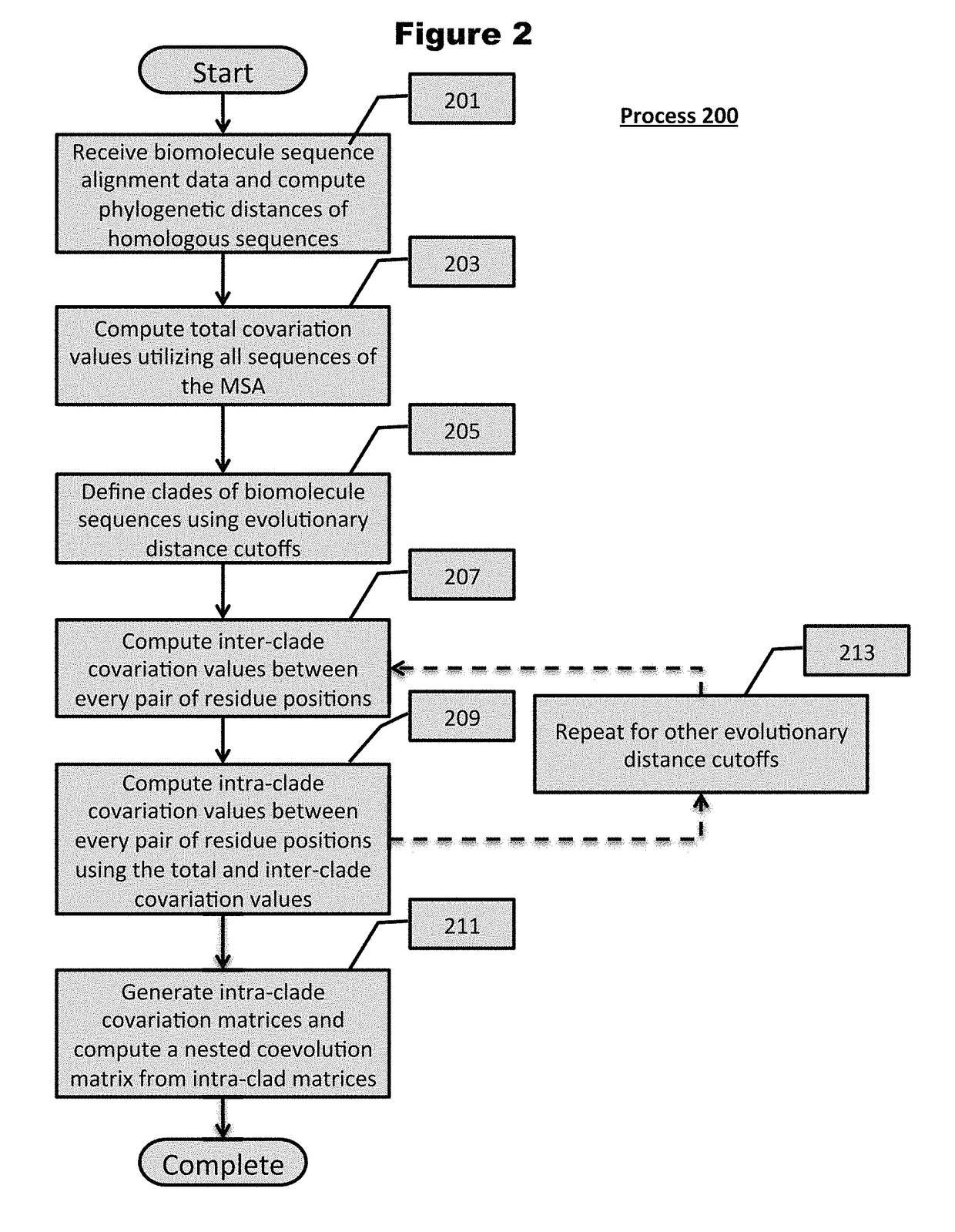Methods and Systems for Identification of Biomolecule Sequence Coevolution and Applications Thereof
a biomolecule and coevolution technology, applied in the field of methods and systems for identification and analysis of biomolecule sequence variation, can solve the problems of truncation of proteins, inability to distinguish between evolutionary relationships, and premature stop codons, and achieve the effect of accurate interpretation of genetic tests
- Summary
- Abstract
- Description
- Claims
- Application Information
AI Technical Summary
Benefits of technology
Problems solved by technology
Method used
Image
Examples
Embodiment Construction
[0095]Turning now to the drawings and data, embodiments of the invention are generally directed to computational generation of sequence coevolution matrices that reveal residue positions coevolving in various evolutionary distances, and applying these signals to extract information of functionally-related residues that was previously indiscernible. In additional embodiments, the coevolution matrices can identify biomolecule sectors that are defined by groups of residues in a particular biomolecule that coevolve together within a particular evolutionary distance. More embodiments are directed to linking biomolecule sectors to a structure and / or function as determined by assigned, coevolving residue variants with a known structure and / or function. Additionally, a number of embodiments are directed to predicting the structure and / or function of unlabeled residue positions coevolving in the same sector as labeled variants. Many more embodiments of the present invention are directed at p...
PUM
 Login to View More
Login to View More Abstract
Description
Claims
Application Information
 Login to View More
Login to View More - R&D
- Intellectual Property
- Life Sciences
- Materials
- Tech Scout
- Unparalleled Data Quality
- Higher Quality Content
- 60% Fewer Hallucinations
Browse by: Latest US Patents, China's latest patents, Technical Efficacy Thesaurus, Application Domain, Technology Topic, Popular Technical Reports.
© 2025 PatSnap. All rights reserved.Legal|Privacy policy|Modern Slavery Act Transparency Statement|Sitemap|About US| Contact US: help@patsnap.com



